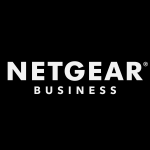What is our primary use case?
This solution is the backbone of our data center.
We have multiple tenants built on it, in a network-centric design. We have our Dev QA tenant, user acceptance tenant, production tenant, our DMZ, and then our user edge where everything comes in and goes out. We have firewalls in between all of the tenants, and we use ACI to microsegment between the networks, within the tenants. All of the intra-tenant traffic goes through the firewalls.
How has it helped my organization?
Prior to our deployment of ACI, everything was, essentially, flat open access. By using ACI we were able to segment out everything and get more visibility into our virtual environment. At our data center, we are 99.99% virtual.
What is most valuable?
The most valuable feature is the integration with the virtual switches of our UCS platform. It provides a lot of visibility from the ACI console. The ability to tenant-out the traffic and segment it, without having to get into separate physical hardware or trying to figure out VDCs manually, has been really powerful and extremely useful for us.
What needs improvement?
I would like to see the usability improved by simplifying the user interface. For example, it would be nice to have a simple way to find endpoints and get information about them. It would be great if they could make the interface a little more user-friendly, but not trade power off for simplicity.
Buyer's Guide
Cisco Nexus
September 2025
Learn what your peers think about Cisco Nexus. Get advice and tips from experienced pros sharing their opinions. Updated: September 2025.
868,787 professionals have used our research since 2012.
What do I think about the stability of the solution?
This solution has been very stable and functioning properly, and we've barely touched it since it went in. We've got a big project to start doing upgrades on it, but so far so good. We haven't had any issues with it as long as I've been at the company.
What do I think about the scalability of the solution?
In terms of scalability, we haven't grown the deployment, yet, because we're nowhere near capacity. There is a lot of scalability in terms of what we could use, although it's a matter of what we actually need. It seems very scalable, but we just haven't had the need to scale up yet.
How are customer service and support?
I have not had to speak with technical support yet, which speaks to the stability of the product.
How was the initial setup?
The initial setup of this solution is fairly complex. That's one thing about ACI; it takes a bit to wrap your mind around how it works. It's not overly complicated once you understand the concepts, but coming from somewhere that had never worked with anything like ACI, it was difficult for me, initially, to grasp the complexity of it. Once I did, I realized that it's not actually as complicated as it looks when you first log in.
What about the implementation team?
We have used a couple of consultants over the years. I believe it was BT that assisted with the original deployment, and it is Presidio that is working on our upgrade project.
My understanding is that the people from BT were great. With respect to Presidio, they know their stuff, and they seem to be putting together good, concrete plans for our system.
What was our ROI?
I believe that we have seen ROI. We have been able to streamline our processes dramatically because of the way that the new architecture works. While it was a large investment, I believe that it has had a big impact on the productivity of our systems, in general.
What other advice do I have?
There are still a lot of things that we have yet to do with this system, in particular with the APIs and scripting. Also, there are a lot of additional features that we haven't had a chance to look at yet because we haven't upgraded.
Not a lot of people in my area are familiar with this solution. It is kind of new and scary, so a lot of people are a little wary of it. However, now that I've had some time with it, I find it very powerful. Having direct access to virtual switches is a huge advantage.
My advice to anybody researching this solution is to take a good look at it because it is great for segmenting your network. Make sure that you get a lot of training as part of your deployment, including education on how it works and why the design is the way it is, or what the best practice design is if you're looking at creating your own.
I would rate this solution a seven out of ten.
Disclosure: My company does not have a business relationship with this vendor other than being a customer.










